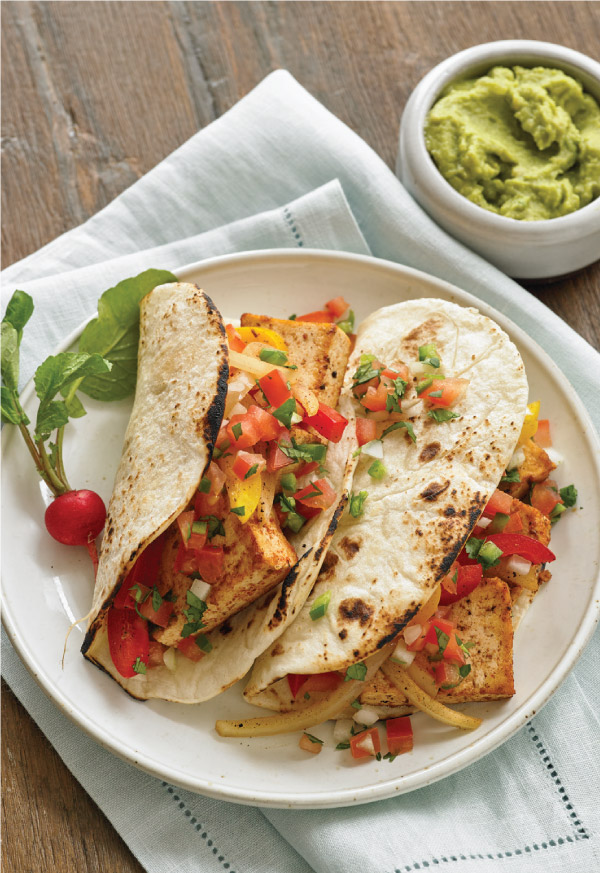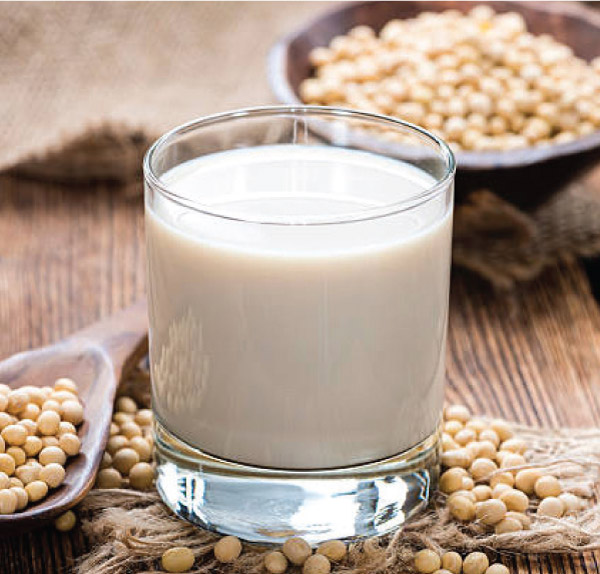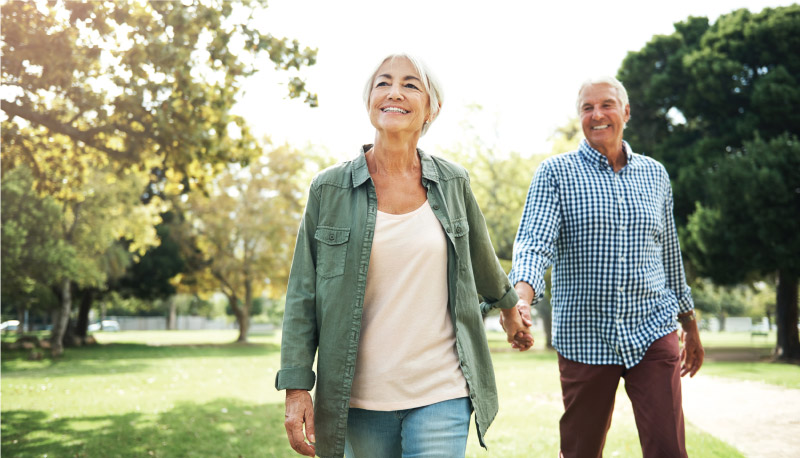SOY + BREAST CANCER
Soyfoods in the diet of women with breast cancer. ![]()
Introduction
Interest in the protective effects of soyfoods against breast cancer began three decades ago1 and can be attributed primarily to two observations. The first observation is the historically low breast cancer mortality rates in soyfood-consuming Asian countries.2 The second observation is the potential for soybean isoflavones to function as anti-estrogens.3 Foods made from soybeans are uniquely rich sources of isoflavones, which are diphenolic, nonsteroidal molecules.4 These soybean constituents are classified as both phytoestrogens and selective estrogen receptor modulators (SERMs).5
SERMs can function as estrogen receptor (ER) agonists, ER antagonists or have no effects at all in tissues that possess ERs. The preference for isoflavones to bind to and activate ERββ in comparison to ERαβ is thought to account for their SERM-like properties.5 When activated, these two receptors can have very different and sometimes even opposite physiological effects. For example, in the breast, activation of ERββ is thought to inhibit the proliferative effects of ERα activation.6 In contrast to isoflavones, estrogen has equal affinity for both receptors.
Epidemiologic research indicates soy consumption is associated with an approximate one-third reduction in risk of developing breast cancer.7 However, several lines of evidence suggest that for soy to reduce breast cancer risk, consumption must occur during childhood and/or adolescence. Case-control studies indicate that the consumption of just one to two servings of soy during this period may reduce breast cancer risk by as much as 60 percent.8-10 Isoflavones appear to change the cells in the developing breast that makes them permanently less likely to transform into cancer cells. The notion that early soy intake reduces breast cancer risk is consistent with current understanding that exposures and events during the first 20 years of life profoundly impact risk of developing breast cancer.11
Despite the proposed breast cancer preventive effects, there has been concern that soyfoods, because they contain isoflavones, worsen the prognosis of women with breast cancer and increase the risk of developing breast cancer in women who are at high risk for this disease. The soy breast cancer controversy is based almost exclusively on a series of rodent studies that began to be published in the late 1990s, which showed that isoflavones stimulate the growth of existing estrogen-sensitive mammary tumors in athymic ovariectomized mice.12,13 Of the three isoflavones in soybeans, genistein, daidzein and glycitein, it is primarily genistein that stimulates tumor growth in this model.
There are well-known limitations to animal studies but in the case of soy-related research, rodents appear to be of especially limited value for providing insight about soyfoods because they metabolize isoflavones so differently than humans.14 Furthermore, it was shown in 2011, that just slightly tweaking the above referenced athymic ovariectomized rodent model in what is an arguably a more physiological direction, causes a complete loss of the tumor-stimulatory effect of genistein.15

More importantly, as discussed below, over the past decade or so, human research indicates not only that women with breast cancer can safely consume soyfoods but may benefit by doing so. It is noteworthy that the extent to which estrogen therapy increases breast cancer risk is unclear. In fact, in the Women’s Health Initiative trials, estrogen therapy led to a statistically significant decreased risk of dying from breast cancer whereas estrogen plus progestin therapy led to a significant increase.16 Thus, it is the progestin component of hormone therapy, much more than estrogen, that is problematic. Soy does not exert progestin-like effects.
Clinical Data
No intervention study has examined the impact of soy consumption on breast cancer recurrence and/or mortality. For this reason, it must be acknowledged that data that are able to definitively resolve the soy breast cancer controversy do not exist. However, the impact of soy on several established markers of breast cancer risk, including mammographic density17,18 and breast cell proliferation19 has been studied extensively. The results of this research are extremely reassuring in that it shows even when isoflavone exposure greatly exceeds typical Japanese intake, which is ~40 milligrams per day (mg/d),20 breast tissue is not adversely affected. Not surprisingly, this is the conclusion reached by the European Food Safety Authority after a multi-year comprehensive evaluation of the literature.21
Mammographic Density
Variations in percent mammographic density reflect variations in the amounts of collagen and number of epithelial and non-epithelial cells in the breast. Extensive mammographic density is associated with a markedly increased risk of invasive breast cancer.17 In 2009, a meta-analysis by Hooper et al.22 concluded that isoflavone intake does not alter breast tissue density in postmenopausal women (the group proposed as being at risk from isoflavone exposure) but may cause a small increase in premenopausal women. However, the clinical significance of this latter finding was deemed unclear and statistical significance was lost in one of three sensitivity analyses. The results in postmenopausal women are aligned with two subsequently published one-year studies. In one, Wu et al.23 found no evidence that 50 mg/d isoflavones affect breast MRI fibroglandular tissue density or mammographic density in high-risk women and previously treated breast cancer patients. Additionally, a Greek study of postmenopausal women that intervened with a soy extract found no effect on mammographic density, although this was also true for low-dose hormone therapy.
Breast Cell Proliferation
A better predictor of breast cancer risk than mammographic density is in vivo breast cell proliferation.25 The most widely practiced measurement of proliferation involves immunohistochemical detection of the nuclear non-histone protein Ki67, which is thought to be involved in ribosomal RNA synthesis.26,27 The fraction of actively cycling cells in normal breast tissue appears to represent a marker for breast cancer risk assessment.19 In addition, Ki-67 level is considered a valuable biomarker in breast cancer patients that can be used in treatment and follow-up.28 Estrogen plus progestin therapy, which observational studies show is associated with a marked increased risk of breast cancer, has been shown to increase proliferation four to 10-fold within just 12 weeks.29-31
In contrast to the proliferative effects of combined hormone therapy, none of the six studies that evaluated the effects of isoflavones on in vivo breast cell proliferation showed an increase in comparison to the control or placebo group.32-37 These studies involved healthy women, women at high-risk of developing breast cancer and breast cancer survivors. The duration of these studies ranged from two weeks32 to one year.34 Daily isoflavone intake – expressed in aglycone equivalents – ranged from 3635 to 23536 mg. For comparison, one serving of a traditional soyfood (e.g., 100 g tofu or 250 ml soymilk) contains ~25 mg isoflavones and mean daily intake among older adults in Japan ranges from 30 to 50 mg.20 In the study by Palomares et al.,34 which involved breast cancer survivors, the contralateral breast was used to assess cell proliferation and in the study by Sartipour et al.,33 the ratio of the number of apoptotic to mitotic cells was used as an assessment of proliferation.


It is noteworthy that in the studies by Shike et al.37 and Khan et al.,36 women were exposed to approximately 62 mg/d and 150 mg/d genistein, respectively, amounts provided by approximately five and 12 servings of traditional soyfoods, respectively. Thus, untoward effects on the breast were not noted, even in response to isoflavone intakes that exceed those which can reasonably be consumed via soyfoods. It is also noteworthy that three of the six studies found gene expression was modified in a manner suggestive of a proliferative effect and an increased breast cancer risk, which might be expected from estrogen exposure, and yet proliferation was unaffected.32,36,37
Prospective Epidemiologic Data
Over the past 10 years, five prospective epidemiologic studies, three from China38-40 and two from the U.S.,41,42 have evaluated the impact of post-diagnosis soy intake on the prognosis of breast cancer survivors. The results of these studies are not only supportive of the safety of soyfood consumption but suggest it significantly reduces breast cancer recurrence and breast cancer specific mortality. In 2012, based on the epidemiologic data, the American Institute for Cancer Research (AICR)43 and the American Cancer Society44 concluded that breast cancer patients can safely consume soyfoods.
In 2018, a report from the AICR and the World Cancer Research Fund concluded that post-diagnosis soy intake may improve the survival of breast cancer patients.45
The key epidemiologic research addressing the impact of soy intake on the prognosis of breast cancer survivors was published in 2013. Chi et al.46 meta-analyzed the results of five prospective studies, three from China and two from the U.S. These studies involved over 11,000 women who were followed for between approximately four and seven years. When comparing high soy intake (~2 servings per day) with low soy intake (<½ serving per day) after a diagnosis of breast cancer, high soy intake was associated with a 16% reduction in mortality and a 26% reduction in recurrence. Both of these findings were statistically significant. Furthermore, the beneficial effect of post-diagnosis soy intake was apparent in Chinese women to the same extent as American women. Also, soy benefited both both ER+ and ER- breast cancer patients.
There is no obvious mechanistic explanation for the beneficial effects of post-diagnosis soy intake given that the relevant clinical data found soy/isoflavone intake did not affect markers of breast cancer risk. It may be that soy/isoflavone exposure exerts effects undetected by changes in mammographic density or cell proliferation. For example, there is research suggesting soyfoods could inhibit angiogenesis (the growth of blood vessels)48,49 and metastasis.50,51.52

Summary and Conclusions
In the prospective epidemiologic studies discussed above, isoflavone exposure occurred via the consumption of soyfoods. In contrast, the clinical studies intervened primarily with soy protein or isoflavone supplements. Given all the data, the evidence indicates that soyfood intake recommendations for breast cancer survivors do not differ from those for healthy women. In the SBCSS, post-diagnosis soy protein intake was associated with benefit even when intake exceeded 20 g/d. Additionally, in the fourth quartile, the isoflavone intake cutoff in the SBCSS was >62.68 mg/d. Women in this group were consuming approximately three servings of soyfoods per day. However, in Japan and high soy-consuming regions within China such as Shanghai, mean soyfood intake is closer to 1½ to 2 servings per day.
| AUTHOR/YEAR/(REFERENCE) | MENOPAUSAL STATUS | BREAST CANCER STATUS | PERCENT ER+PATIENTS | (N)1 | STUDY DURATION,MEAN (RANGE) | INTERVENTION PRODUCT | TOTAL ISOFLAVONE EXPOSURE (MG/D)2 | PROLIFERATION | APOPTOSIS |
|---|---|---|---|---|---|---|---|---|---|
| Hargreaves/1999/(17) | Premenopausal | Mixed3 | Not indicated | 28 Soy 53 Control | ~14 days (8-14) | Textured vegetable protein | 45 | No change | No change |
| Sartippour/2004/(18) | Premenopausal | Yes | 84 | 17 Soy 26 Control | 23 days (13-45) | Tablets | 120 | No change | No change |
| Palomares/2004/(19) | Premenopausal | Yes | 74 | 9 Soy 9 Control | 11.7 months | Tablets | 100 | No change4 | No change |
| Cheng/2007/(20) | Premenopausal | No | Not Applicable | 26 Soy 25 Control | 12 weeks | Tablets | 36 | No change | Not Evaluated |
| Khan/2012/(21) | Pre- and post-menopausal5 | High risk6 | Not Applicable | 49 Soy 49 Control | 6 months | Tablets | 235 (150 genistein) | No change | No change |
| Shike/2014/(11) | Postmenopausal | Yes | 85 | 54 Soy 50 Control | 14 days (7-30) | Isolated soy protein | 103 (62 genistein) | No change | No change |
1 Based on the number evaluated for proliferation 2 Exressed as aglycone equivalent weight 3 Fibroadenoma (38), invasive ductal breast cancer (13), fibocystic masses (9), ductectasia (6), sclerosing adenosis (3), ductal carcinoma in situ (3), lipoma (1), assessor breast removal (1) 4 Samples were normal tissue from contralateral breast 5 n=45 postmenopausal, 53 postmenopausal 6 Women with a history of unilateral risk breast cancer or with a 5-year Gail or Claus risk estimate ≥1.66% for women older than 40 years, ≥1.0% for those aged between 30 and 39, and ≥0.1% for women aged between 20 and 29.
Key Takeaways for Patient Care
| 1 | Soyfoods are uniquely-rich sources of isoflavones. |
| 2 | Isoflavones are classsified as phtoestrogens but different from the hormone estrogen at both the molecular and clinical level. |
| 3 | The estrogen-like activity of isoflavones has raised concern that soyfoods may adversely affect the prognosis of women with breast cancer. |
| 4 | Limited clinical data show that exposure to high-doses of isoflavones may affect the expression of genes in breast tissue involved in controlling cell proliferation. |
| 5 | Extensive clinical data show that exposure to high-dose isoflavones does not affect the rate at which breast cells replicate in healthy and in woomen who have been diagnosed with breast cancer. |
| 6 | Extensive prospective epidemiologic data from China and the United States show that the consumption of soyfoods after a diagnosis of breast cancer reduces breast cancer-specific mortality and tumor recurrence. |
| 7 | The clinical and epidemiologic data are consistent with the positions of the American Cancer Society and the American Institute for Cancer Research which are that women with breast cancer can safely consume soyfoods. |

References
1. Messina M, Barnes S. The role of soy products in reducing risk of cancer. J Natl Cancer Inst. 1991;83(8):541-6.
2. Pisani P, Parkin DM, Bray F, et al. Estimates of the worldwide mortality from 25 cancers in 1990. Int J Cancer. 1999;83(1):18-29.
3. Folman Y, Pope GS. The interaction in the immature mouse of potent oestrogens with coumestrol, genistein and other utero-vaginotrophic compounds of low potency. J Endocrinol. 1966;34(2):215-25.
4. Franke AA, Custer LJ, Wang W, et al. HPLC analysis of isoflavonoids and other phenolic agents from foods and from human fluids. Proc Soc Exp Biol Med. 1998;217(3):263-73.
5. Oseni T, Patel R, Pyle J, et al. Selective estrogen receptor modulators and phytoestrogens. Planta Med. 2008;74(13):1656-65.
6. Paruthiyil S, Parmar H, Kerekatte V, et al. Estrogen receptor beta inhibits human breast cancer cell proliferation and tumor formation by causing a G2 cell cycle arrest. Cancer Res. 2004;64(1):423-8.
7. Xie Q, Chen ML, Qin Y, et al. Isoflavone consumption and risk of breast cancer: a dose-response meta-analysis of observational studies. Asia Pacific journal of clinical nutrition. 2013;22(1):118-27.
8. Messina M, Hilakivi-Clarke L. Early intake appears to be the key to the proposed protective effects of soy intake against breast cancer. Nutr Cancer. 2009;61(6):792-8.
9. Messina M, Wu AH. Perspectives on the soy-breast cancer relation. Am J Clin Nutr. 2009;89(5):1673S-9S.
10. Baglia ML, Gu K, Zhang X, et al. Soy isoflavone intake and bone mineral density in breast cancer survivors. Cancer Causes Control. 2015;26(4):571-80.
11. Potischman N, Linet MS. Invited commentary: are dietary intakes and other exposures in childhood and adolescence important for adult cancers? Am J Epidemiol. 2013;178(2):184-9.
12. Hsieh CY, Santell RC, Haslam SZ, et al. Estrogenic effects of genistein on the growth of estrogen receptor- positive human breast cancer (MCF-7) cells in vitro and in vivo. Cancer Res. 1998;58(17):3833-8.
13. Helferich WG, Andrade JE, Hoagland MS. Phytoestrogens and breast cancer: a complex story. Inflammopharmacology. 2008;16(5):219-26.
14. Setchell KD, Brown NM, Zhao X, et al. Soy isoflavone phase II metabolism differs between rodents and humans: implications for the effect on breast cancer risk. Am J Clin Nutr. 2011;94(5):1284-94.
15. Onoda A, Ueno T, Uchiyama S, et al. Effects of S-equol and natural S-equol supplement (SE5-OH) on the growth of MCF-7 in vitro and as tumors implanted into ovariectomized athymic mice. Food Chem Toxicol. 2011;49(9):2279-84.
16. Manson JE, Aragaki AK, Rossouw JE, et al. Menopausal hormone therapy and long-term all-cause and cause-specific mortality: The Women’s Health Initiative randomized trials. JAMA. 2017;318(10):927-38.
17. Boyd NF, Martin LJ, Yaffe MJ, et al. Mammographic density and breast cancer risk: current understanding and future prospects. Breast cancer research : BCR. 2011;13(6):223.
18. Rice MS, Bertrand KA, VanderWeele TJ, et al. Mammographic density and breast cancer risk: a mediation analysis. Breast cancer research : BCR. 2016;18(1):94.
19. Huh SJ, Oh H, Peterson MA, et al. The proliferative activity of mammary epithelial cells in normal tissue predicts breast cancer risk in premenopausal women. Cancer Res. 2016;76(7):1926-34.
20. Messina M, Nagata C, Wu AH. Estimated Asian adult soy protein and isoflavone intakes. Nutr Cancer. 2006;55(1):1-12.
21. EFSA. EFSA ANS Panel (EFSA Panel on Food Additives and Nutrient Sources added to Food), 2015. Scientific opinion on the risk assessment for peri- and post-menopausal women taking food supplements containing isolated isoflavones. EFSA J. 13,4246 (342 pp). 2015.
22. Hooper L, Madhavan G, Tice JA, et al. Effects of isoflavones on breast density in pre- and post-menopausal women: a systematic review and meta-analysis of randomized controlled trials. Hum Reprod Update. 2010;16(6):745-60.
23. Wu AH, Spicer D, Garcia A, et al. Double-blind randomized 12-month soy intervention had no effects on breast MRI fibroglandular tissue density or mammographic density. Cancer Prev Res (Phila). 2015;8(10):942-51.
24. Labos G, Trakakis E, Pliatsika P, et al. Efficacy and safety of DT56a compared to hormone therapy in Greek post-menopausal women. J Endocrinol Invest. 2013;36(7):521-6.
25. Hanahan D, Weinberg RA. Hallmarks of cancer: the next generation. Cell. 2011;144(5):646-74.
26. Rahmanzadeh R, Huttmann G, Gerdes J, et al. Chromophore-assisted light inactivation of pKi-67 leads to inhibition of ribosomal RNA synthesis. Cell Prolif. 2007;40(3):422-30.
27. Scholzen T, Gerdes J. The Ki-67 protein: from the known and the unknown. J Cell Physiol. 2000;182(3):311-22.
28. Soliman NA, Yussif SM. Ki-67 as a prognostic marker according to breast cancer molecular subtype. Cancer Biol Med. 2016;13(4):496-504.
29. Conner P, Soderqvist G, Skoog L, et al. Breast cell proliferation in postmenopausal women during HRT evaluated through fine needle aspiration cytology. Breast Cancer Res Treat. 2003;78(2):159-65.
30. Murkes D, Conner P, Leifland K, et al. Effects of percutaneous estradiol-oral progesterone versus oral conjugated equine estrogens-medroxyprogesterone acetate on breast cell proliferation and bcl-2 protein in healthy women. Fertil Steril. 2011;95(3):1188-91.
31. Conner P. Breast response to menopausal hormone therapy--aspects on proliferation, apoptosis and mammographic density. Ann Med. 2007;39(1):28-41.
32. Hargreaves DF, Potten CS, Harding C, et al. Two-week dietary soy supplementation has an estrogenic effect on normal premenopausal breast. J Clin Endocrinol Metab. 1999;84(11):4017-24.
33. Sartippour MR, Rao JY, Apple S, et al. A pilot clinical study of short-term isoflavone supplements in breast cancer patients. Nutr Cancer. 2004;49(1):59-65.
34. Palomares MR, Hopper L, Goldstein L, et al. Effect of soy isoflavones on breast proliferation in postmenopausal breast cancer survivors. Breast Cancer Res Treatment. 2004;88 (Suppl 1)4002 (Abstract).
35. Cheng G, Wilczek B, Warner M, et al. Isoflavone treatment for acute menopausal symptoms. Menopause. 2007;14(3 Pt 1):468-73.
36. Khan SA, Chatterton RT, Michel N, et al. Soy isoflavone supplementation for breast cancer risk reduction: A randomized phase II trial. Cancer Prev Res (Phila). 2012;5(2):309-19.
37. Shike M, Doane AS, Russo L, et al. The effects of soy supplementation on gene expression in breast cancer: a randomized placebo-controlled study. J Natl Cancer Inst. 2014;106(9).
38. Kang X, Zhang Q, Wang S, et al. Effect of soy isoflavones on breast cancer recurrence and death for patients receiving adjuvant endocrine therapy. CMAJ. 2010;182(17):1857-62.
39. Zhang YF, Kang HB, Li BL, et al. Positive effects of soy isoflavone food on survival of breast cancer patients in China. Asian Pacific journal of cancer prevention : APJCP. 2012;13(2):479-82.
40. Shu XO, Zheng Y, Cai H, et al. Soy food intake and breast cancer survival. JAMA. 2009;302(22):2437-43.
41. Caan BJ, Natarajan L, Parker B, et al. Soy food consumption and breast cancer prognosis. Cancer Epidemiol Biomarkers Prev. 2011;20(5):854-8.
42. Guha N, Kwan ML, Quesenberry CP, Jr., et al. Soy isoflavones and risk of cancer recurrence in a cohort of breast cancer survivors: the Life After Cancer Epidemiology study. Breast Cancer Res Treat. 2009;118(2):395-405.
43. American Institute for Cancer Research. Soy is safe for breast cancer survivors. http://wwwaicrorg/cancer-research-update/november_21_2012/cru-soy-safehtml (accessed Feburary 5, 2013). 2012.
44. Rock CL, Doyle C, Demark-Wahnefried W, et al. Nutrition and physical activity guidelines for cancer survivors. CA Cancer J Clin. 2012;62(4):242-74.
45. American Institute for Cancer Research, World Cancer Research Fund. Diet, nutrition, physical activity and breast cancer survivors. Updated 2018. Continuous update project (http://www.aicr.org/continuous-update-project/breast-cancer.html). Accessed July 14, 2018.
46. Chi F, Wu R, Zeng YC, et al. Post-diagnosis soy food intake and breast cancer survival: A meta-analysis of cohort studies. Asian Pacific journal of cancer prevention : APJCP. 2013;14(4):2407-12.
47. Nechuta SJ, Caan BJ, Chen WY, et al. Soy food intake after diagnosis of breast cancer and survival: an in-depth analysis of combined evidence from cohort studies of US and Chinese women. Am J Clin Nutr. 2012;96(1):123-32.
48. Kang X, Jin S, Zhang Q. Antitumor and antiangiogenic activity of soy phytoestrogen on 7,12-dimethylbenz[alpha]anthracene-induced mammary tumors following ovariectomy in Sprague-Dawley rats. J Food Sci. 2009;74(7):H237-42.
49. Varinska L, Gal P, Mojzisova G, et al. Soy and breast cancer: Focus on angiogenesis. Int J Mol Med. 2015;1611728-49.
50. Lakshman M, Xu L, Ananthanarayanan V, et al. Dietary genistein inhibits metastasis of human prostate cancer in mice. Cancer Res. 2008;68(6):2024-32.
51. Xiao X, Liu Z, Wang R, et al. Genistein suppresses FLT4 and inhibits human colorectal cancer metastasis. Oncotarget. 2015;6(5):3225-39.
52. Xu L, Ding Y, Catalona WJ, et al. MEK4 function, genistein treatment, and invasion of human prostate cancer cells. J Natl Cancer Inst. 2009;101(16):1141-55.
53. Marini H, Bitto A, Altavilla D, et al. Breast safety and efficacy of genistein aglycone for postmenopausal bone loss: a follow-up study. J Clin Endocrinol Metab. 2008;93(12):4787-96.
54. Dorjgochoo T, Gu K, Zheng Y, et al. Soy intake in association with menopausal symptoms during the first 6 and 36 months after breast cancer diagnosis. Breast Cancer Res Treat. 2011;130(3):879-89.
Connect with us through our social channels